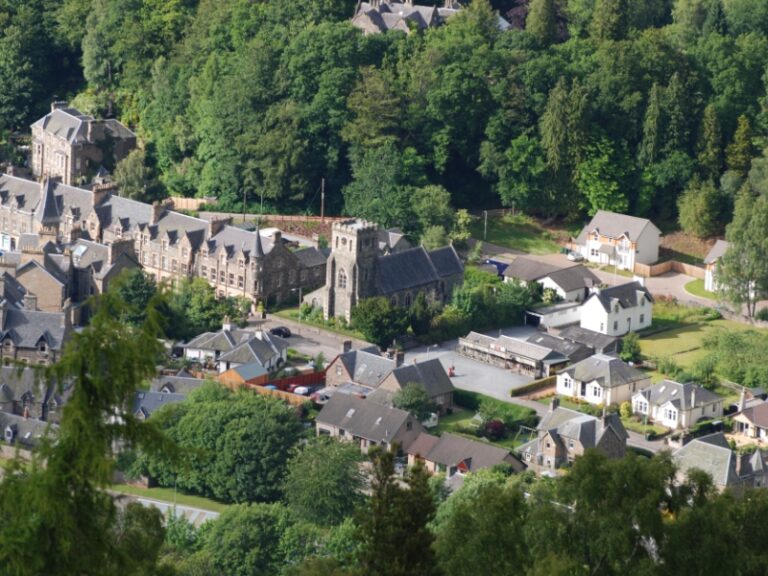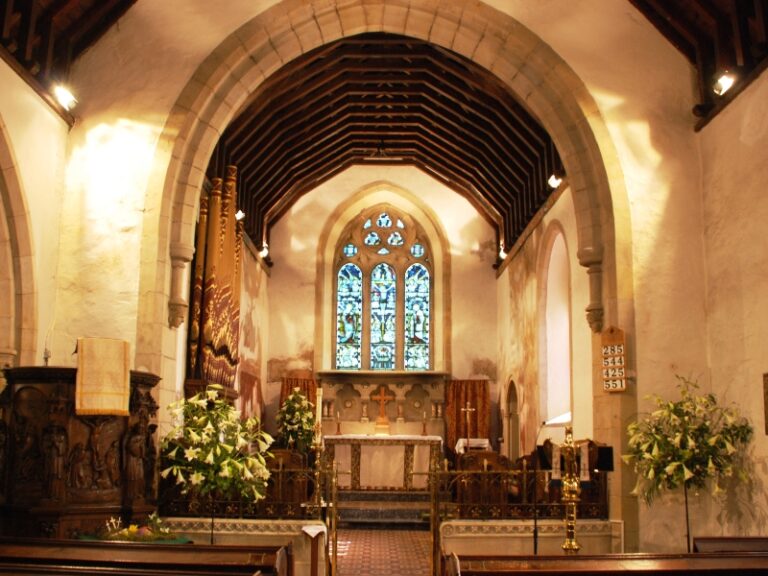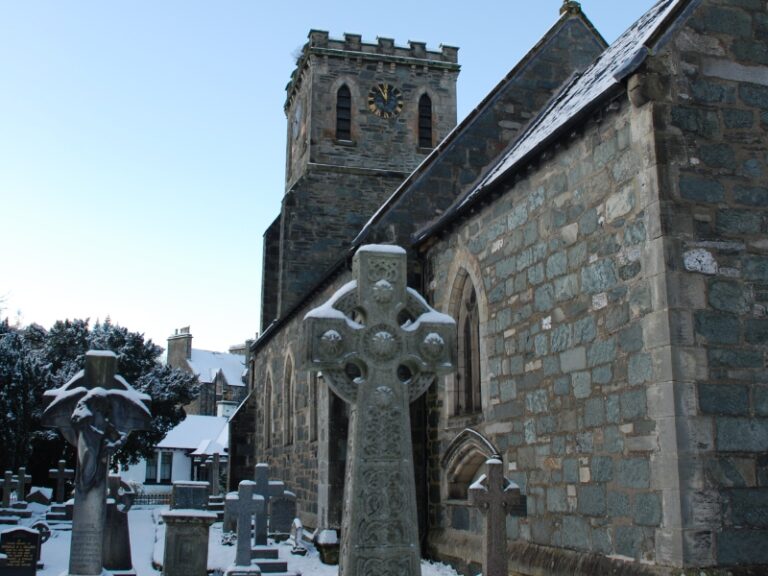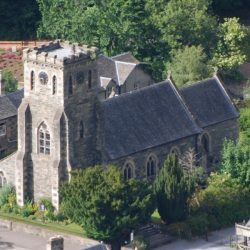What do we know about the history of our Church?
The main church and clock tower to a design by William Slater 1858, with north aisle by Norman & Beddoe 1883. Slater font and cover, Kempe east window, William Morris windows to Burne-Jones designs. Organ originally by Forster & Andrews 1874. Three-bell chime, clock by James Ramsay of Dundee 1882. Beautifully kept churchyard.
Nestling in the hills of Perthshire, in the heart of Scotland, St Mary’s Episcopal church belongs to the Diocese of St Andrews, Dunkeld and Dunblane.
St Mary’s, like the village of Birnam, owes its existence to the rapid increase in travel in the mid 19th century. The Highland Railway initially terminated here and, in addition to bringing considerable prosperity to the area, this gave rise to a rapid boost in the local population. In turn, this resulted in the need for a new place of worship to accommodate the increasing number of worshippers of the Scottish Episcopal persuasion.



The land for the new church was given by Sir William Stewart, Laird of Murthly, and the building was completed in 1858, is dedicated to St Mary the Virgin by the Rt Revd Charles Wordsworth, Bishop of St Andrews from 1853 to 1893 and a nephew of the famous poet.
The first incumbent of the church was Reverend John MacMillan. Such was the prosperity of the newfound Church that most of her needs were rapidly met, including an addition to the tower in 1870, a new parsonage in 1872, a fine Forster and Andrews organ two years later, and a choir vestry towards the end of that decade.
With Birnam’s increasing reputation as a resort, especially during the fishing and shooting seasons, the pressure on the space in the Church grew. A side aisle had to be added in 1883 to accommodate the number of worshippers.
On the north side of the “new” aisle, the two windows were designed by Sir Edward Burne-Jones and executed by William Morris & Co. There are also two modern stained glass windows created by Roland Milton D.A. (Edin) A.M.G.P. The Tower features a four-sided clock made by James Ramsay of Dundee in 1882. The hours and half hours are struck on a tenor bell cast by John Wilson of Glasgow in 1868.
